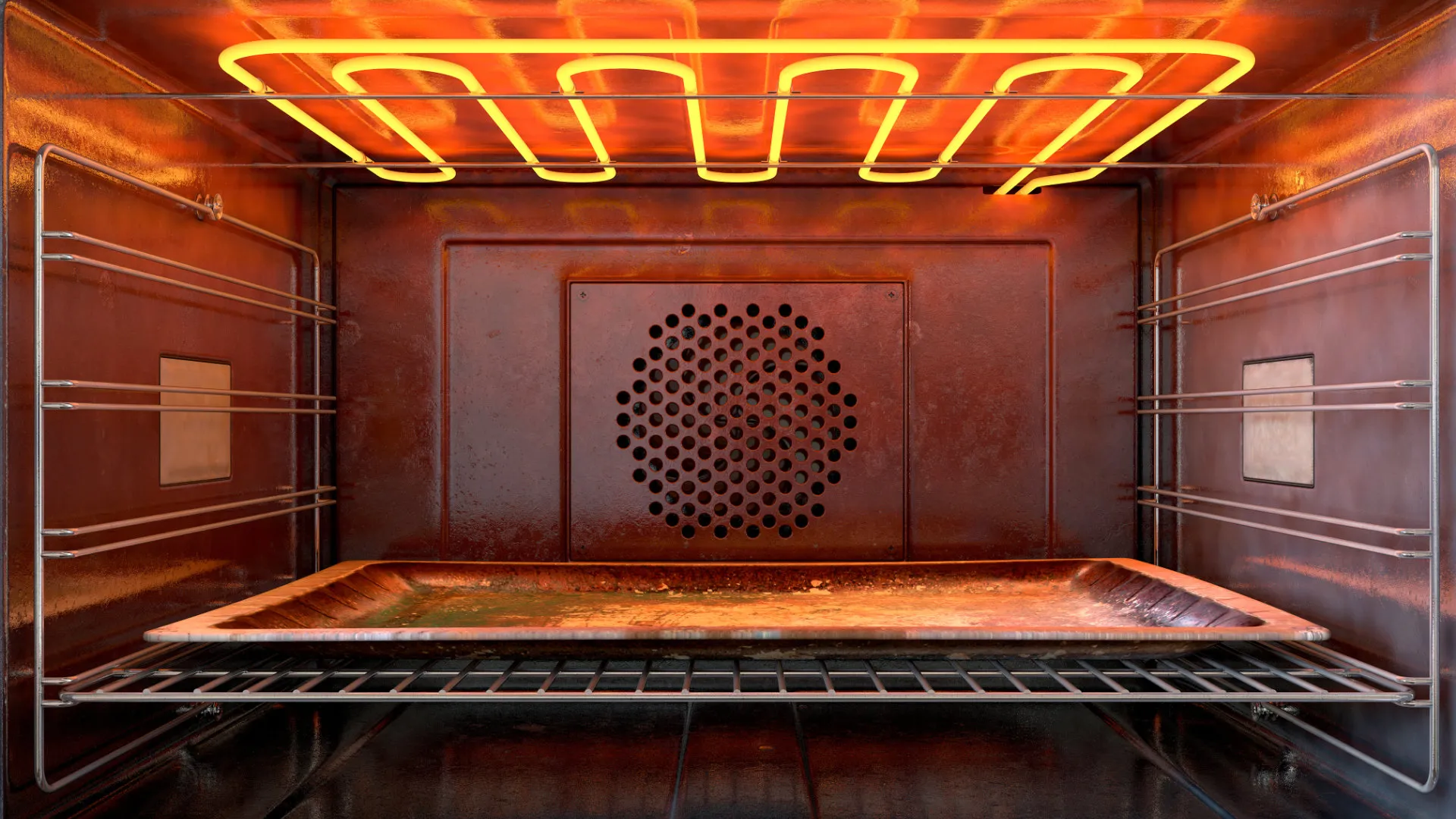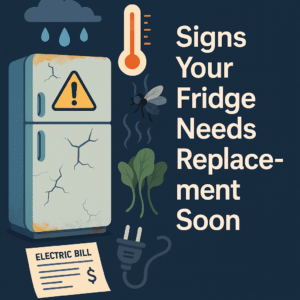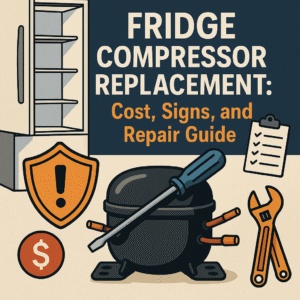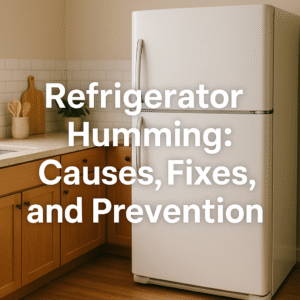Your oven not heating up can be frustrating, especially when you have a meal to prepare. In this guide, we’ll explore why is your oven not heating up (whether it’s a gas oven not heating or an electric oven problem) and share easy oven repair tips to help you get things cooking again. We’ll cover common causes and solutions in a friendly, step-by-step way so you can try to fix the problem yourself or know when to call Sarcon Appliance Repair.
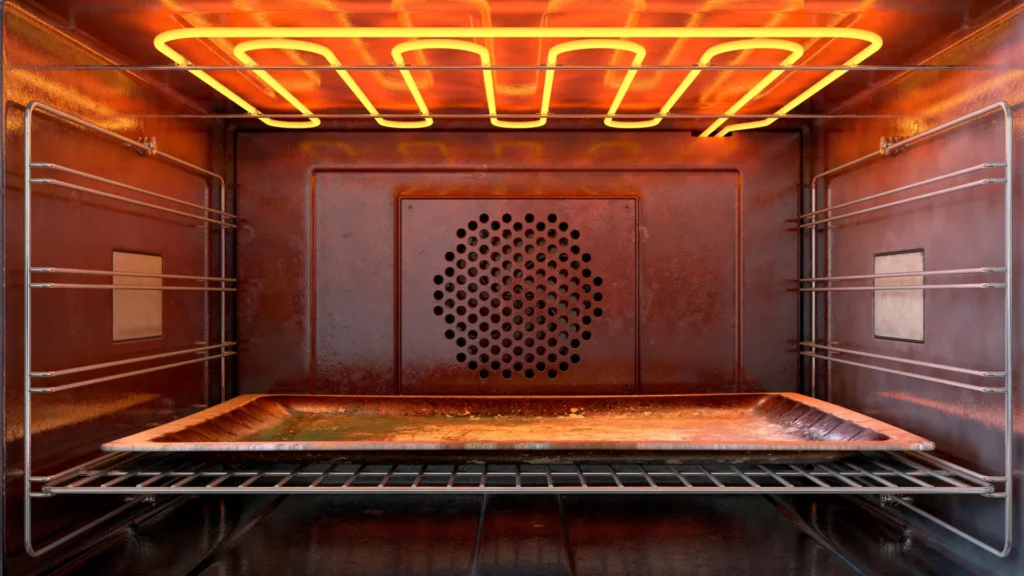
Common Reasons Your Oven Not Heating Up
A non-heating oven can bring your dinner plans to a halt. Understanding what can stop an oven from heating – whether it’s power-related, mechanical, or setting issues – is the first step to a fix. Let’s dive into the common causes and troubleshooting tips to get your oven heating again.
Power Issues: Unplugged or Circuit Breaker
One of the simplest causes of an oven not heating is a power issue. If you have an electric oven or electric range, power is essential for it to heat up. Without power, an oven simply cannot heat. Always ensure the oven is plugged in and that your home’s electrical circuit is functioning.
- Check the power cord and outlet: If your oven has a plug (some wall ovens or ranges are hardwired instead), make sure it is securely plugged in. Try plugging a small appliance into the outlet to ensure it works.
- Inspect the circuit breaker: Ovens typically use a double breaker. Go to your electrical panel and see if the oven’s breaker has tripped. If the breaker switch is halfway between On and Off, flip it fully Off and then back On to reset it.
- Look for a fuse or switch: Some ovens have an on/off switch or fuse on a nearby wall or at the back of the unit. Make sure any oven switch is turned on and check for any blown fuses.
- Confirm electrical safety: If the oven still has no power after these checks, do not attempt further DIY repairs. Contact a qualified electrician or appliance technician, as continuing could be hazardous.
Ensuring the oven has power and a good connection is the first oven repair tip you should try. Often a simple outlet or breaker reset is all that’s needed to get your oven heating again.
Faulty Heating Element (Electric Oven)
If you have an electric oven, it relies on heating elements (metal coils) to get hot. There are usually two heating elements: one at the top for broiling and another at the bottom for baking. A broken or burned-out element can stop your oven from heating properly. For example, if only the broil element glows and the bake element stays cool, the bake element likely needs replacement.
- Inspect the element: Open the oven and look closely at the baking element. If you see cracks, blisters, or breaks in the coil, the element is likely bad.
- Test the element: Turn the oven on to 350°F and observe the element. A healthy element will glow red-hot after a minute or two. If the bake element does not glow (while the broil element does), that element is faulty.
- Replace if needed: If the heating element is damaged, it can be replaced. First, turn off the power at the breaker. Remove the screws holding the element in place and disconnect its wires. Install a matching replacement element from your oven’s manufacturer.
- Professional help: Working with high-voltage parts can be dangerous. If you’re not comfortable replacing the element or if the oven still doesn’t heat after replacement, call a professional technician.
A faulty heating element is one of the most common electric oven not heating problems. Swapping out a bad element often restores normal heating.
Igniter and Gas Supply Issues (Gas Oven)
For gas ovens, heat comes from a gas burner, so the gas supply and the igniter are key. If your gas oven not heating up, follow these steps – but first, safety first: if you smell gas or suspect a leak, turn off the gas supply and call a professional immediately. If there’s no obvious gas leak, check the following:
- Gas supply: Ensure the oven’s gas valve is fully open. If none of your gas appliances are working or you suspect a supply issue, contact a plumber or gas service technician.
- Pilot light or igniter: Modern gas ovens use an electric igniter instead of a standing pilot light. When you turn on the oven, you should see the igniter glow bright orange just before the burner ignites. If it doesn’t glow (or if the flame won’t stay lit), the igniter may be weak or failing.
- Clean the burner and igniter: Sometimes debris or grease can block gas flow. With the oven off, use a soft brush or needle to gently clean around the igniter and burner ports. Then turn the gas back on and test again.
- Listen and observe: If you hear clicking but the burner never lights, or the igniter glows faintly without flame, the igniter likely needs replacement.
- Call a professional: Dealing with gas and high-voltage igniters can be risky. If cleaning doesn’t fix it, or if you’re unsure, call a certified appliance technician to inspect and replace faulty parts.
Gas oven problems often boil down to the igniter or gas supply. A weak or broken igniter is a common culprit when a gas oven won’t heat.
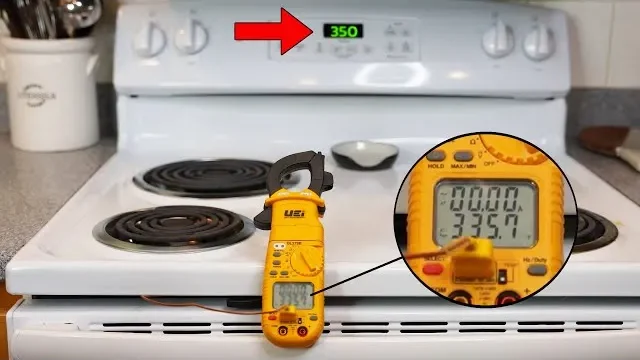
Malfunctioning Temperature Sensor or Thermostat
Your oven has a temperature sensor (a small metal probe) at the back that tells the control board what the oven’s temperature is. If this sensor is broken or misaligned, the oven may shut off before reaching the set temperature. Similarly, the thermostat or temperature dial can also fail.
- Check sensor position: In the upper back of the oven, find the thin metal temperature sensor. Make sure it isn’t touching the oven wall. If it’s bent against the wall, bend it slightly so it’s centered in the oven cavity.
- Test temperature accuracy: Place an oven thermometer inside the oven and set it to a known temperature. See how the actual temperature compares to the set temperature. A large discrepancy can indicate a bad sensor or the need for calibration.
- Inspect the thermostat/knob: If your oven has a dial, ensure it turns smoothly and isn’t cracked. If the controls are electronic, look for any error codes on the display. Check the owner’s manual for code meanings.
- Replace sensor if needed: Sensors can be tested with a multimeter. If you’re comfortable, check its resistance; if it doesn’t match the expected value (often around 1100 ohms at room temperature), it should be replaced.
- Call for help: If your oven consistently heats incorrectly and simple fixes don’t work, it’s time to call a technician. Replacing sensors or recalibrating thermostats may require professional tools.
A bad temperature sensor or thermostat can make your oven underheat or overheat. It’s a less obvious cause but one to consider when other parts appear fine.
Door Seal and Ventilation Problems
Sometimes the issue isn’t a part at all but how the oven contains heat. If the oven door doesn’t seal properly, warm air will escape, and the oven will struggle to reach temperature.
- Inspect the door gasket: The oven door has a rubber or fiberglass seal (gasket) around its edge. Check this gasket for any tears, nicks, or areas where it’s coming loose. A damaged gasket should be replaced.
- Clean and align the door: Grease or food debris can prevent the door from closing fully. Clean the gasket and the edges of the oven. Make sure the door hinges are aligned and that the door closes tightly without any gaps.
- Check self-clean lock: If you recently ran a self-clean cycle, ensure the door lock lever has fully disengaged. A locked or partially locked door won’t heat properly.
- Inspect door springs/hinges: If the door feels loose or won’t stay closed, the springs or hinges may be broken. In this case, the door won’t stay snug against the oven frame.
- Professional check: If you suspect the oven is leaking heat, a technician can use an infrared thermometer to check for heat loss around the door and help you replace gaskets or hinges if needed.
A faulty door seal or hinge may seem minor, but even a small gap can prevent the oven from heating efficiently. Always ensure the door closes fully for good heat retention.
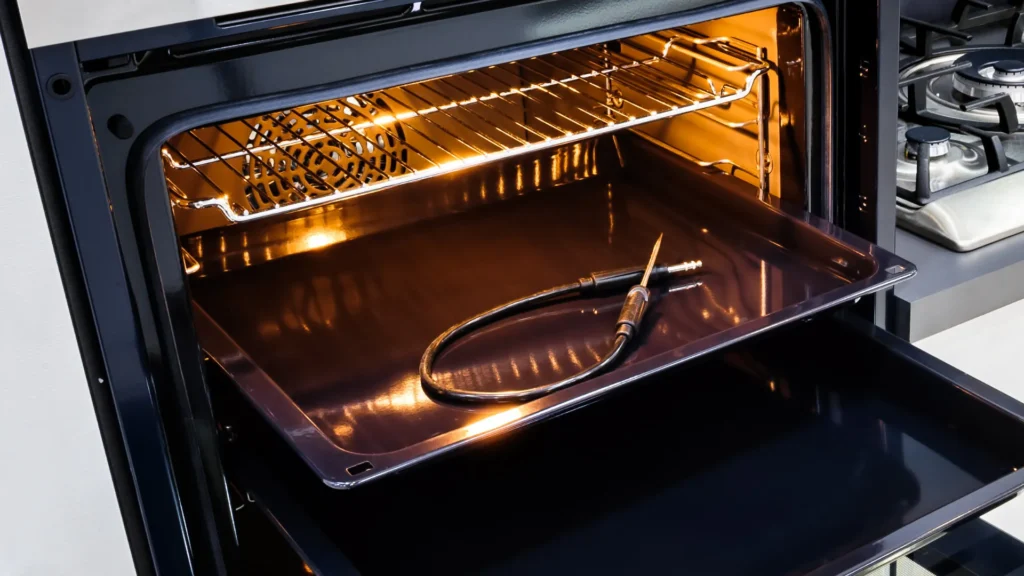
Control Board or Timer Malfunctions
Modern ovens often rely on an electronic control board or timer. If these components fail, the oven may not heat at all even if everything else seems fine.
- Watch for error codes: Many newer ovens display error codes if the control board senses a problem. Check your owner’s manual for any codes you see on the screen.
- Reset the oven: Sometimes electronic controls can be reset by disconnecting power. Try turning off the oven at the circuit breaker for one minute, then turning it back on.
- Inspect the control board: If the oven’s display is blank or shows random errors, the control board might have failed. Visible burn marks or bulging components on the board are sure signs of trouble.
- Consistent failures: If multiple functions (clock, lights, touchpad) are not working, or if none of the fixes above help, the control board or timer is a likely suspect.
- Call a technician: Replacing a control board is complex and requires the exact part for your model. It’s best handled by a professional repair service.
A failing control board can render an oven unresponsive. It’s not as common as element or igniter issues, but if the oven acts dead and nothing else is wrong, it’s worth checking the electronics.
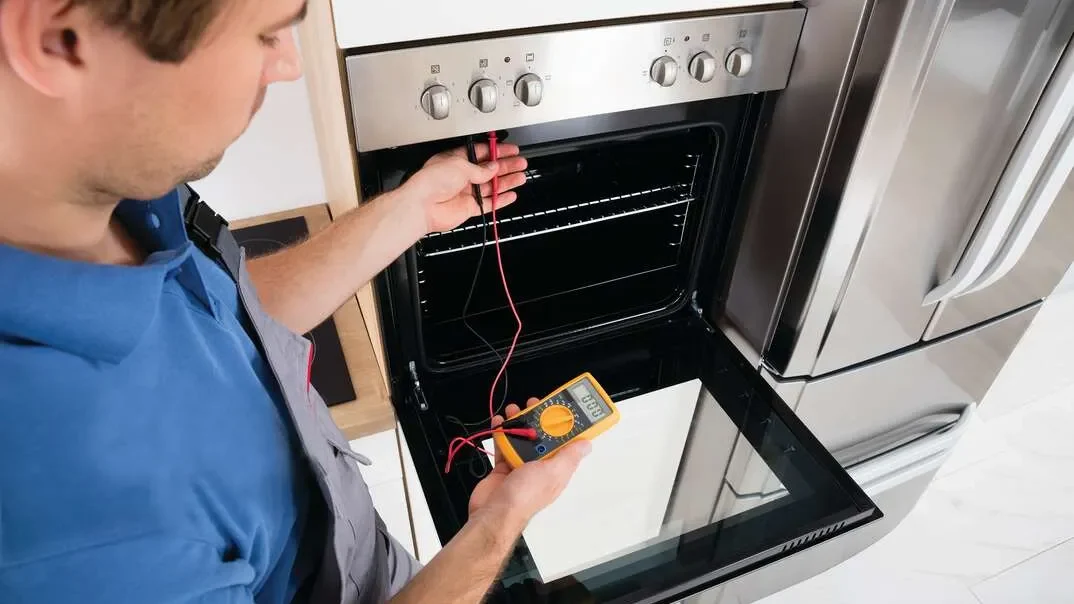
Frequently Asked Questions
Why is my oven not heating up even though it’s turned on?
If your oven is powered on but not heating, the most likely issues are power supply problems or a faulty component. First, check the power: make sure the oven is plugged in and the circuit breaker hasn’t tripped. If it’s a gas oven, ensure the gas valve is open. Next, inspect the internal parts: a broken heating element (for electric ovens) or a weak igniter (for gas ovens) is a common culprit. Also check the door seal and temperature sensor as described above. If these simple checks don’t solve it, the problem may be more complex, and it’s time to call a professional.
My electric oven won’t heat evenly or fully. What can I do?
Uneven heating or failure to reach the right temperature often points to a damaged element or a faulty sensor. Start by inspecting the bake and broil elements (as above). You can also use an oven thermometer: set the oven to, say, 350°F and check the actual temperature inside. If it’s way off, your sensor or thermostat may need replacing. Make sure the oven is clean and that the door seal is tight (an under-door gap can leak heat). If your troubleshooting doesn’t fix the issue, an appliance technician can recalibrate the oven or replace the defective part.
What should I check if my gas oven is not heating but the stove burners are working?
If your stove’s burners work but the gas oven not heating up, the issue is likely with the oven’s gas supply or igniter. First, ensure the oven’s gas valve is open and that the range is properly connected to gas. Listen for the oven clicking on and look for the igniter glowing (through the oven window if you have one). If the igniter glows very weakly or not at all, it may need replacing. Also check the burner ports for clogs. If you ever smell gas or the igniter doesn’t light at all, stop using the oven and have a professional inspect it for safety.
Can I fix my oven myself or should I call a professional?
Many simple fixes can be done safely at home, such as resetting a breaker, plugging in the oven, or cleaning around the burner. If you’re comfortable with basic tools and have a manual, replacing a heating element is sometimes doable. However, any repair involving gas lines, electronic controls, or high-voltage parts should be handled by a trained technician. Sarcon Appliance Repair technicians have the experience and tools to fix ovens safely and quickly. If you’re ever in doubt, it’s best to call a pro.
How long will it take to get my oven repaired?
Repair times vary by issue. Simple problems like replacing a heating element or sensor usually take 1–2 hours for a technician. More involved repairs (like control board replacement) may take longer. Sarcon Appliance Repair offers prompt service in Hershey, Harrisburg, Camp Hill, Mechanicsburg, York, and nearby areas. In many cases we can provide same-day or next-day service to get your oven working again as soon as possible.For friendly, expert help with an oven that won’t heat, Sarcon Appliance Repair is here for you. Our local technicians serve Hershey, Harrisburg, Camp Hill, Mechanicsburg, York, and beyond. We can quickly diagnose and fix any oven heating issue so you can get back to cooking with confidence. Happy cooking and stay safe!

